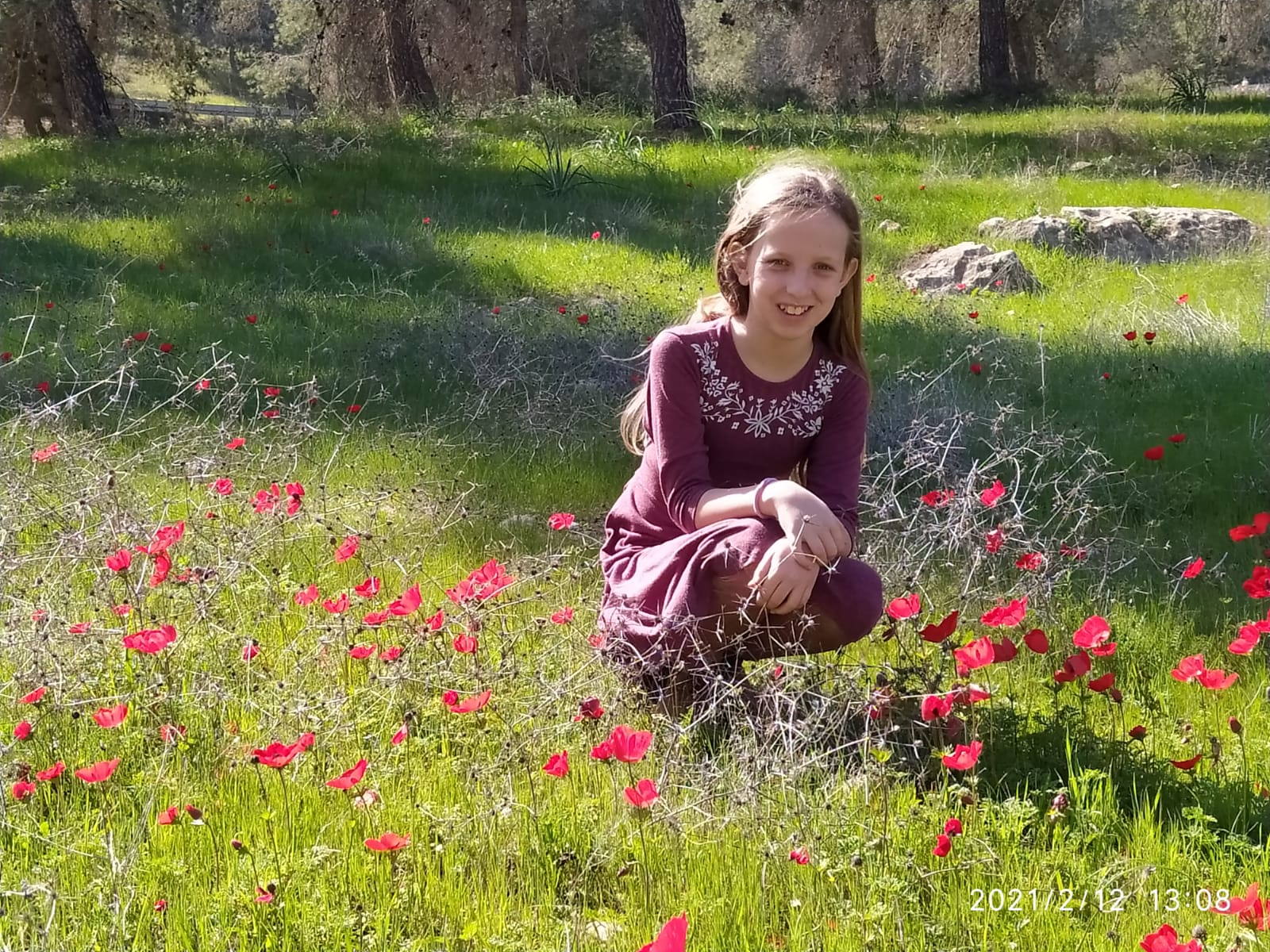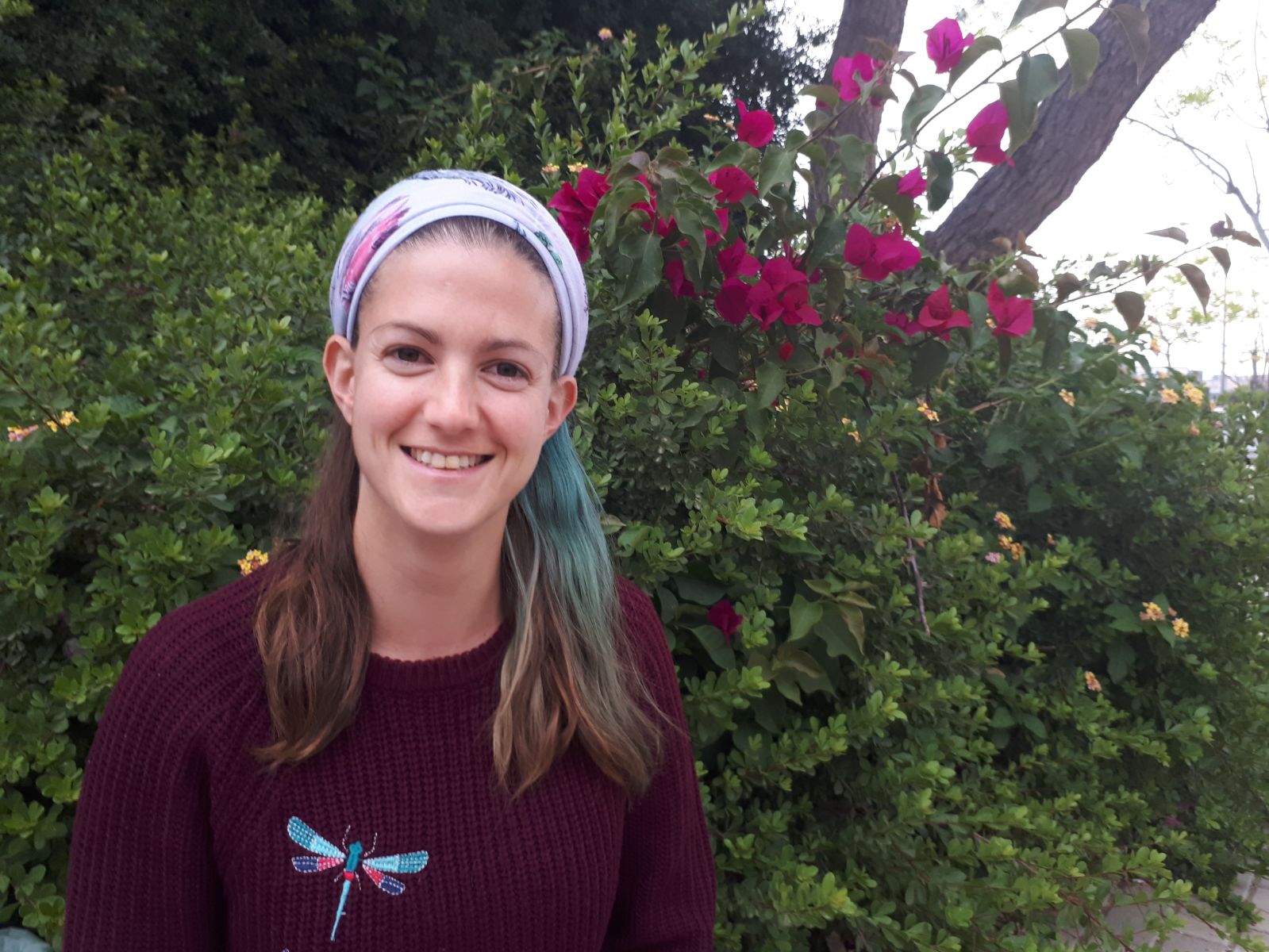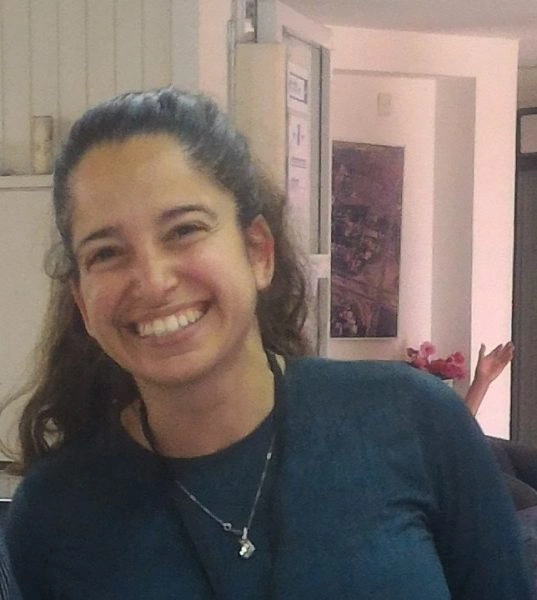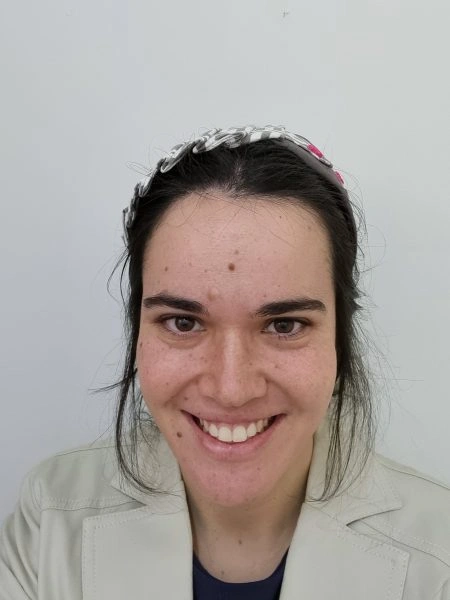כמה מיני עופות טמאות יש? הגמרא עורכת השוואה בין הרשימה בויקרא לבין הרשימה בדברים.
לימוד השבוע מוקדש ע”י טינה לם לע”נ יצחק מאיר בן הרב צבי אריה ואסתר בתיה.
רוצים להקדיש למידה? התחל כאן:
לימוד השבוע מוקדש ע”י טינה לם לע”נ יצחק מאיר בן הרב צבי אריה ואסתר בתיה.
העמקה
רוצה להבין מה באמת קורה מתחת לפני השטח של הסוגיה?
שיעורים, פודקאסטים והרחבות של מיטב המורות שלנו יפתחו לך עוד זוויות וכיווני חשיבה.
חדשה בלימוד הגמרא?
זה הדף הראשון שלך? איזו התרגשות עצומה! יש לנו בדיוק את התכנים והכלים שיעזרו לך לעשות את הצעדים הראשונים ללמידה בקצב וברמה שלך, כך תוכלי להרגיש בנוח גם בתוך הסוגיות המורכבות ומאתגרות.
פסיפס הלומדות שלנו
גלי את קהילת הלומדות שלנו, מגוון נשים, רקעים וסיפורים. כולן חלק מתנועה ומסע מרגש ועוצמתי.
חולין סג
בת מזגא חמרא שריא וסימניך יפה כח הבן מכח האב
But the bird called the little wine pourer is permitted. And your mnemonic to remember this is the idiom of the Sages: The power of the son is greater than the power of the father, i.e., the larger is forbidden while the smaller is permitted.
אמר רב יהודה שקיטנא אריכי שקי וסומקי שריא וסימניך מורזמא גוצי וסומקי אסירי וסימניך ננוס פסול אריכי שקי וירוקי אסירי וסימניך ירוקין פסולין
Rav Yehuda says: There are several types of shekitena. The long-shanked red ones are permitted. And your mnemonic to remember this is the murzema bird, which is similar in appearance and known to be kosher. The little red ones are forbidden, and your mnemonic for this is the halakha that a dwarf priest is unfit for Temple service. The long-shanked green, i.e., yellow, ones are forbidden, and your mnemonic for this is the mishna (56a): Innards that have turned green render an animal a tereifa and unfit for consumption.
אמר רב יהודה שלך זה השולה דגים מן הים דוכיפת שהודו כפות תניא נמי הכי דוכיפת שהודו כפות וזהו שהביא שמיר לבית המקדש
Rav Yehuda says: As for the shalakh, listed as a non-kosher bird (see Leviticus 11:17), this is the bird that scoops [sholeh] fish out of the sea. The dukhifat (see Leviticus 11:19) is the bird whose comb seems bent [hodo kafut] due to its thickness. The Gemara notes: This is also taught in a baraita: The dukhifat is the bird whose comb seems bent, and this is the bird that brought the shamir to the Temple. As recounted in tractate Gittin (68b), King Solomon required a unique worm called the shamir to carve stones of the Temple, as the verse states: “There was neither hammer nor ax nor any tool of iron heard in the house, while it was in building” (I Kings 6:7).
ר’ יוחנן כי הוה חזי שלך אמר (תהלים לו, ז) משפטיך תהום רבה כי הוה חזי נמלה אמר (תהלים לו, ז) צדקתך כהררי אל
The Gemara recounts: When Rabbi Yoḥanan would see a shalakh, he would say: “Your judgments are like the great deep” (Psalms 36:7), as God exacts retribution even upon the fish in the sea. When he would see an ant, he would say the first half of the same verse: “Your righteousness is like the mighty mountains,” as God provides sustenance for the tiny ant just as He does for the largest creatures.
אמר אמימר לקני ובטני שריין שקנאי ובטנאי מקום שנהגו לאכול אוכלין מקום שנהגו שלא לאכול אין אוכלין אטו במנהגא תליא מילתא אין ולא קשיא הא באתרא דשכיחי פרס ועזניה הא באתרא דלא שכיחי פרס ועזניה
Ameimar says: The laknei and batnei birds are permitted. As for the sakna’ei and batna’ei birds, in any place that it is customary to eat them, one may eat them; in any place that it is customary not to eat them, one may not eat them. The Gemara asks: Is that to say that the matter of whether it is permitted depends on custom? The Gemara responds: Yes, but it is not difficult: This place where they are forbidden is a place where the peres and ozniyya are found. Since they are similar to these birds, one must be concerned that people will confuse them, even though the sakna’ei and batna’ei are themselves kosher. That place where they are permitted is a place where the peres and ozniyya are not found.
אמר אביי קואי וקקואי אסירי קקואתא שריא במערבא מלקו עילוה וקרו לה תחוותא
Abaye says: The birds called kevai and kakvai are forbidden, but the kakvata is permitted. Still, in the West, Eretz Yisrael, they flog one who eats it on its account, and they call it taḥveta.
ת”ר (ויקרא יא, יח) תנשמת באות שבעופות אתה אומר באות שבעופות או אינו אלא באות שבשרצים אמרת צא ולמד מי”ג מדות שהתורה נדרשת בהן דבר הלמד מענינו במה הכתוב מדבר בעופות אף כאן בעופות
The Sages taught in a baraita: The tinshemet, listed in the Torah as non-kosher (see Leviticus 11:18), is the ba’ut among birds. One might ask: Do you say that it is the ba’ut among birds, or is it only the ba’ut among creeping animals? The tinshemet is also listed among the creeping animals (see Leviticus 11:30). Say: Go out and learn from the thirteen hermeneutical principles, of which one is: A matter derived from its context. What are the adjacent verses speaking about? They are speaking about birds. So too here, the word tinshemet is referring to birds.
תניא נמי גבי שרצים כה”ג תנשמת באות שבשרצים אתה אומר באות שבשרצים או אינו אלא באות שבעופות אמרת צא ולמד מי”ג מדות שהתורה נדרשת בהן דבר הלמד מענינו במה הכתוב מדבר בשרצים אף כאן בשרצים
The Gemara notes: It is also taught in a baraita in this way with regard to the tinshemet listed among the creeping animals: The tinshemet here is the ba’ut among creeping animals. One might ask: Do you say that it is the ba’ut among creeping animals, or it is only the ba’ut among birds? Say: Go out and learn from the thirteen hermeneutical principles, of which one is: A matter derived from its context. What are the adjacent verses speaking about? They are speaking about creeping animals. So too here, the word tinshemet is referring to creeping animals.
אמר אביי באות שבעופות קיפוף באות שבשרצים קורפדאי אמר רב יהודה קאת זו הקוק רחם זו שרקרק
Abaye says: The ba’ut among birds is commonly called the kifof. The ba’ut among creeping animals is commonly called the kurpedai. Rav Yehuda says: As for the ka’at listed in the Torah as non-kosher (see Leviticus 11:18), this is the bird called a kuk. As for the raḥam, this is the sherakrak.
א”ר יוחנן למה נקרא שמו רחם כיון שבא רחם באו רחמים לעולם אמר רב ביבי בר אביי והוא דיתיב אמידי ועביד שרקרק וגמירי דאי יתיב אארעא ושריק אתא משיחא שנאמר (זכריה י, ח) אשרקה להם ואקבצם
Rabbi Yoḥanan says: Why is it called the raḥam? Because when the raḥam comes to Eretz Yisrael, mercy [raḥamim] comes to the world, as it appears at the beginning of the rainy season. Rav Beivai bar Abaye said: And it is a sign of rain only when it sits on something and makes a sherakrak sound. And it is learned as a tradition that if it sits on the ground and hisses [veshareik], this is a sign that the Messiah is coming, as it is stated: “I will hiss [eshreka] for them, and gather them” (Zechariah 10:8).
א”ל רב אדא בר שימי למר בר רב אידאי והא ההוא דיתיב בי כרבא ושרק ואתא גלל אפסקיה למוחיה א”ל ההוא ביידא הוה
Rav Adda bar Shimi said to Mar bar Rav Idai: But wasn’t there a certain raḥam that sat on a plowed field and hissed, and a stone came and broke its head? Mar bar Rav Idai said to him: That raḥam was a liar and was punished for prophesying falsely.
ת”ר עורב זה עורב את כל העורב להביא עורב העמקי למינו להביא עורב הבא בראשי יונים
With regard to the verse: “Every orev after its kinds” (Leviticus 11:15), the Sages taught in a baraita: As for the orev, this is the crow. When the verse states: “Every orev,” this serves to include the valley crow as non-kosher. And the verse states: “After its kinds,” to include the crow that comes at the heads of pigeons.
אמר מר עורב זה עורב אטו קמן קאי אלא אימא עורב זה עורב אוכמא וכן הוא אומר (שיר השירים ה, יא) קווצותיו תלתלים שחורות כעורב העמקי חיוורא וכן הוא אומר (ויקרא יג, כה) ומראהו עמוק מן העור כמראה חמה העמוקה מן הצל
The Gemara explains: The Master said: As for the orev, this is the crow. Is that to say that the particular crow stands before us, such that one immediately knows which one it is? Rather, say: As for the orev, this is the black crow, and so the verse states: “His locks are curled, and black as a crow” (Song of Songs 5:11). The Gemara continues to explain the baraita: The valley crow [ha’amaki] is the white crow. And so the verse states with regard to leprosy: “If the appearance thereof be deeper [amok] than the skin” (Leviticus 13:30), and the Sages explained: As the appearance of an area lit by the sun, which seems deeper than the shade, which appears to cover it. There is therefore an association between a valley and the color white.
ועורב הבא בראשי יונים אמר רב פפא לא תימא דאתי בריש יוני אלא דדמי רישיה לדיונה
And with regard to the crow that comes at the heads of pigeons, Rav Pappa said: Do not say that the baraita means that it comes at the head of pigeons, i.e., it dwells with them; rather, it means that this crow’s head resembles that of a pigeon.
ת”ר הנץ זה הנץ למינהו להביא את בר חיריא מאי בר חיריא אמר אביי שורינקא
With regard to the verse: “And the netz after its kinds” (Leviticus 11:16), the Sages taught: As for the netz, this is the hawk. The verse states: “After its kinds,” to include the bird called bar ḥireya. The Gemara asks: What is the bar ḥireya? Abaye said: It is the bird commonly called the shurineka.
אמר רב יהודה החסידה זו דיה לבנה למה נקרא שמה חסידה שעושה חסידות עם חברותיה האנפה זו דיה רגזנית למה נקרא שמה אנפה שמנאפת עם חברותיה
With regard to the verse: “And the ḥasida, and the anafa after its kinds” (Leviticus 11:19), Rav Yehuda says: As for the ḥasida, this is the white dayya. And why is it called ḥasida? Since it performs charity [ḥasidut] for its fellows, giving them from its own food. As for the anafa, this is the irritable dayya. And why is it called anafa? Since it quarrels [mena’efet] with its fellows.
אמר רב חנן בר רב חסדא אמר רב חסדא אמר רב חנן בריה דרבא אמר רב עשרים וארבעה עופות טמאין הן א”ל רב חנן בר רב חסדא לרב חסדא דהיכא אי דויקרא עשרים הוו אי דמשנה תורה עשרים וחד הוו וכי תימא דאה דכתיבא בויקרא ולא כתיבא במשנה תורה שדייה עלייהו אכתי עשרין ותרין הוו
§ Rav Ḥanan bar Rav Ḥisda says that Rav Ḥisda says that Rav Ḥanan, son of Rava, says that Rav says: There are twenty-four non-kosher birds. Rav Ḥanan bar Rav Ḥisda said to Rav Ḥisda, his father: From where in the Torah is this number obtained? If you are referring to the list of Leviticus (11:13–19), there are only twenty birds listed there. If you are referring to the list of Deuteronomy (14:12–18), there are only twenty-one there. And if you would say: Add the da’a, which is written in Leviticus but is not written in Deuteronomy, to the others in Deuteronomy, still there are only twenty-two.
אמר ליה הכי אמר אבוה דאמך משמיה דרב (ויקרא יא, יד) למינה למינה למינו (דברים יד, טו) למינהו הרי כאן ארבע אי הכי עשרין ושית הוו אמר אביי דאה וראה אחת היא דאי סלקא דעתך תרתי אינון
Rav Ḥisda said to him: This is what your mother’s father, Rav Ḥanan, son of Rava, said in the name of Rav: The phrases “after its kinds,” “after its kinds,” “after its kinds,” and “after its kinds,” that appear in each list indicate additional cases. Here, then, are four more. The Gemara objects: If so, there are twenty-six, not twenty-four. Abaye said: The da’a mentioned in Leviticus and the ra’a mentioned in Deuteronomy are one bird. As, if it enters your mind that they are two different birds,
מכדי משנה תורה לאוסופי הוא דאתא מאי שנא הכא דכתיב דאה ומ”ש הכא דכתיב ראה ולא כתיב דאה אלא ש”מ מין ראה ודאה אחת היא
one might ask: Since it is assumed that the list in Deuteronomy comes to add to the list in Leviticus, what is different here, in Leviticus, that it is written: “Da’a,” and what is different here, in Deuteronomy, that it is written: “Ra’a,” and da’a is not written? Rather, conclude from the presence of each on only one list that the ra’a and da’a are one species.
ואכתי כ”ה הוו אמר אביי כשם שראה ודאה אחת היא כך איה ודיה אחת היא דאי ס”ד תרתי אינון מכדי משנה תורה לאוסופי הוא דאתא מאי שנא הכא דכתיב למינה אאיה ומ”ש התם דכתיב למינה אדיה אלא ש”מ איה ודיה אחת היא
The Gemara objects: But still, there are twenty-five birds, not twenty-four. Abaye said: Just as the ra’a and da’a are one species, so too, the ayya and the dayya, the latter of which is mentioned only in Deuteronomy, are one species. As, if it enters your mind that they are two different species, one might ask: Since it is assumed that the list in Deuteronomy comes to add to the list in Leviticus, what is different here, in Leviticus, that it is written: “After its kinds,” about the ayya, prohibiting some other kind of ayya, and what is different there, in Deuteronomy, that it is written: “After its kinds,” about the dayya? Why is the ayya not mentioned? Rather, learn from the use of the same phrase with regard to the ayya and dayya that they are one species.
וכי מאחר שאיה ודיה אחת היא למה ליה למיכתב איה ודיה כדתניא רבי אומר אקרא אני איה דיה למה נאמרה כדי שלא תתן פתחון פה לבעל דין לחלוק שלא תהא אתה קורא איה והוא קורא דיה אתה קורא דיה והוא קורא איה לכך כתב במשנה תורה (דברים יד, יג) והראה ואת האיה והדיה למינה
The Gemara asks: And now that the ayya and dayya are one species, why did the Torah need to write both ayya and dayya in Deuteronomy? The Gemara responds: As it is taught in a baraita that Rabbi Yehuda HaNasi says: Given that the two are one species, I will read ayya and know that it is forbidden. Why is dayya stated? It is so as not to give a claim to a litigant to disagree, and it should not occur that you call it an ayya and he calls it a dayya and eats it. Likewise, the Torah did not write only dayya so that it will not occur that you call it a dayya and he calls it an ayya and eats it. Therefore, the Torah writes in Deuteronomy: “And the ra’a, and the ayya, and the dayya after its kinds” (Deuteronomy 14:13). Consequently, both the list in Leviticus and that in Deuteronomy enumerate twenty-four birds, in accordance with the statement attributed to Rav.
מיתיבי למה נשנו בבהמה מפני השסועה ובעופות מפני הראה מאי לאו מדבהמה דהתם לאוסופי עופות נמי לאוסופי לא התם לאוסופי הכא לפרושי
The Gemara raises an objection from a baraita: Why is the list of non-kosher animals in Leviticus repeated? It is due to the necessity of adding the shesua (Deuteronomy 14:7), which was not listed in Leviticus. And the list of non-kosher birds is repeated due to the ra’a. What, is it not understood from the fact that the extra list of animals there, in Deuteronomy, is to add animals, that the list of birds is also repeated to add birds? The Gemara responds: No, there, i.e., with regard to animals, the list is repeated to add, but here, with regard to birds, it is repeated only to explain.
ופליגא דרבי אבהו דא”ר אבהו ראה זו איה ולמה נקרא שמה ראה שרואה ביותר וכן הוא אומר (איוב כח, ז) נתיב לא ידעו עיט ולא שזפתו עין איה תנא עומדת בבבל ורואה נבלה בארץ ישראל
And the opinion that the da’a and ra’a are one species, and that the ayya and dayya are another species, differs from the opinion of Rabbi Abbahu, as Rabbi Abbahu says: The ra’a is the ayya. And why is it called the ra’a? Since it sees [ro’ah] most vividly. And so the verse states: “That path no bird of prey knows, neither has the eye of the ayya seen it” (Job 28:7). And a Sage taught: The ra’a can stand in Babylonia and see a carcass in Eretz Yisrael.
מדראה היינו איה מכלל דדאה לאו היינו ראה מכדי משנה תורה לאוסופי הוא דאתא מאי שנא הכא דכתיב דאה ומאי שנא התם דלא כתיב דאה אלא לאו ש”מ דאה וראה ואיה אחת היא
The Gemara discusses Rabbi Abbahu’s statement: Since the ra’a is the same as the ayya, by inference, one may conclude that the da’a is not the same as the ra’a; otherwise, there are not twenty-four non-kosher birds. But since it is assumed that the list in Deuteronomy comes to add to the list in Leviticus, what is different here, in Leviticus, that it is written: “Da’a,” and what is different there, in Deuteronomy, that da’a is not written? Rather, must one not conclude from the discrepancy that the two are the same? If so, one must conclude that according to Rabbi Abbahu, the da’a and ra’a and ayya are all one species.
ומדראה היינו איה מכלל דדיה לאו היינו איה מאי שנא התם דכתיב למינהו אאיה ומ”ש הכא דלא כתיב למינהו אאיה אלא אדיה אלא ש”מ דאה וראה דיה ואיה אחת היא
And furthermore, from the fact that Rabbi Abbahu holds that the ra’a is the same as the ayya, by inference, one may conclude that the dayya is not the same as the ayya. But if so, one may ask again: What is different there, in Leviticus, that it is written: “After its kinds,” about the ayya, and what is different here, in Deuteronomy, that it is not written: “After its kinds,” about the ayya but about the dayya? Rather, the ayya and dayya must be one species. And one may learn from the combination of the two disputes that according to Rabbi Abbahu, the da’a and ra’a, dayya and ayya are all one species. Consequently, according to Rabbi Abbahu, there are only twenty-three non-kosher species.
תניא איסי בן יהודה אומר מאה עופות טמאין יש במזרח וכולן מין איה הן תני אבימי בריה דר’ אבהו ז’ מאות מיני דגים הן וח’ מאות מיני חגבים ולעופות אין מספר עופות כ”ד הוו אלא ולעופות טהורים אין מספר
§ With regard to the phrase: “The ayya after its kinds” (Leviticus 11:14), it is taught in a baraita that Isi ben Yehuda says: There are one hundred non-kosher birds in the East, and they are all species of ayya. Avimi, son of Rabbi Abbahu, taught: There are seven hundred types of non-kosher fish, and eight hundred types of non-kosher grasshopper, and there are countless birds. The Gemara protests: Are there countless non-kosher birds? But there are only twenty-four non-kosher birds mentioned in the Torah. Rather, Avimi must have meant: And there are countless kosher birds.
תניא רבי אומר גלוי וידוע לפני מי שאמר והיה העולם שבהמה טמאה מרובה מן הטהורות לפיכך מנה הכתוב בטהורה גלוי וידוע לפני מי שאמר והיה העולם שעופות טהורין מרובין על הטמאין לפיכך מנה הכתוב בטמאין
It is taught in a baraita: Rabbi Yehuda HaNasi says: It is revealed and known before the One Who spoke and the world came into being that the species of non-kosher animals are more numerous than the kosher ones. Therefore, the Torah lists the kosher animals, teaching that all the rest are non-kosher. On the other hand, it is revealed and known before the One Who spoke and the world came into being that the species of kosher birds are more numerous than the non-kosher ones. Therefore, the Torah lists the non-kosher birds.
מאי קמ”ל כדרב הונא אמר רב ואמרי לה אמר רב הונא אמר רב משום ר’ מאיר לעולם ישנה אדם לתלמידו דרך קצרה
The Gemara asks: What is this baraita teaching us? The Gemara responds: As Rav Huna says that Rav says, and some say that Rav Huna says that Rav says in the name of Rabbi Meir: A person should always teach his student in a concise manner, just as the Torah is concise in its language.
א”ר יצחק עוף טהור נאכל במסורת נאמן הצייד לומר עוף זה טהור מסר לי רבי א”ר יוחנן והוא שבקי בהן ובשמותיהן
Rabbi Yitzḥak says: A kosher bird may be eaten on the strength of a tradition that it is kosher, without inspecting for the signs listed in the mishna. And the hunter is deemed credible to say: My teacher conveyed to me that this bird is kosher. Rabbi Yoḥanan said: And this is the halakha only when the teacher is familiar with the non-kosher birds and with their names.
בעי ר’ זירא רבו חכם או רבו צייד ת”ש דא”ר יוחנן והוא שבקי בהן ובשמותיהן אי אמרת בשלמא רבו צייד שפיר אלא אי אמרת רבו חכם בשלמא שמייהו גמיר להו אלא אינהו מי ידע להו אלא לאו ש”מ רבו צייד ש”מ
Rabbi Zeira raises a dilemma: Was Rabbi Yoḥanan referring to the hunter’s teacher the Sage, or to his teacher the hunter, i.e., the one who taught him how to hunt? The Gemara responds: Come and hear proof from that which Rabbi Yoḥanan said: And this applies only when the teacher is familiar with them and with their names. Granted, if you say this is referring to his teacher the hunter, this works out well. But if you say it is referring to his teacher the Sage, granted, a Sage will know their names, since he has learned them, but does he recognize the birds themselves? Rather, must one not conclude from it that Rabbi Yoḥanan referred to his teacher the hunter? The Gemara concludes: Indeed, conclude from it that this is so.
ת”ר לוקחין ביצים מן העובדי כוכבים בכל מקום ואין חוששין לא משום נבלות ולא משום טרפות
§ The Sages taught in a baraita: One may buy eggs from the gentiles anywhere, and one need not be concerned, neither with regard to carcasses, i.e., that the egg may have been removed from a carcass of a bird and therefore forbidden, nor with regard to eggs from tereifot, because neither of these possibilities is likely.
ודילמא דעוף טמא נינהו אמר אבוה דשמואל באומר של עוף פלוני טהור ולימא של עוף טהור אי הכי אית ליה לאישתמוטי
The Gemara objects: But perhaps they are from a non-kosher bird. Shmuel’s father said: The baraita is referring to a case where the gentile says they are of such and such bird, which is known to be kosher. The Gemara challenges: But if the gentile is deemed credible, let him say only that they are of a kosher bird. Why does he need to name the species? The Gemara responds: If so, if he does not name the species, he has the opportunity to deflect scrutiny if he is dishonest; but if he names the species, one can bring other eggs of the same species to compare and validate the claim.
ולבדוק בסימנין דתניא כסימני ביצים כך סמני דגים סימני דגים ס”ד סנפיר וקשקשת אמר רחמנא אלא אימא כך סימני
The Gemara asks: But why must one rely on the gentile? Let him inspect the eggs for signs, as it is taught in a baraita: Like the signs of kosher eggs, so too are the signs of fish. The Gemara interjects: Can it enter your mind that the baraita is referring to the signs of fish? The Merciful One states them explicitly in the Torah: “Fins and scales” (Leviticus 11:9). Rather, say: So too are the signs of



































